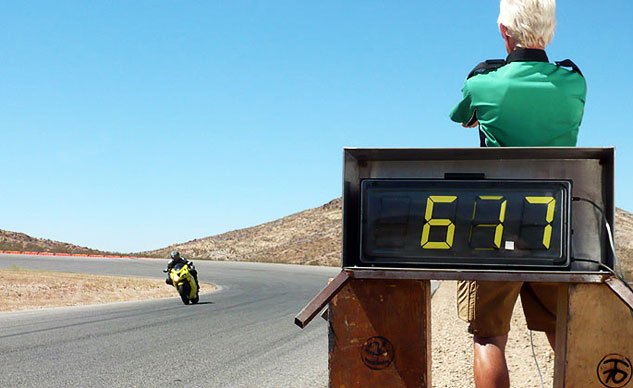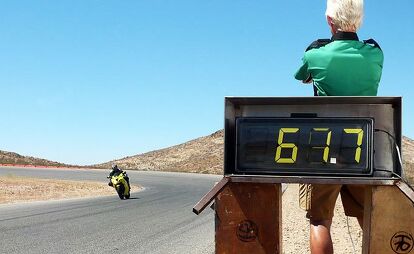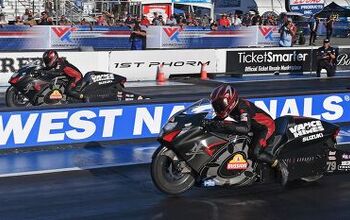Head Shake - The Teachers
“Whatever Boelcke told us was taken as gospel!” ——Manfred von Richthofen
Oswald Boelcke pioneered air combat doctrine in the First World War. A German ace, he authored a list of rules for his subordinates to study in hopes of increasing their odds of success in battle. Boelcke flew, fought, and reflected upon what he had learned to instruct what were to become some of the finest combat aviators of his era. The doctrine he developed is still acknowledged by those in the air-combat community today. That doctrine is known as the Dicta Boelcke. If history is any indication Boelcke taught well, you might recognize the name of one of his charges, Manfred von Richthofen, better known as The Red Baron.
Keith Code is the owner and founder of the California Superbike School; he has raced, written on, and instructed others in the art and science of racing and winning on motorcycles, including some of the finest motorcycle road racers in the world. His seminal book, A Twist of the Wrist, and its sequel, The Soft Science of Road Racing Motorcycles, served as guidebooks to myself and legions of other roadracers in their quest for faster lap times and podium finishes. If history is any indication Code has taught well, one of his understudies wrote the forward for his first book:
“We spent days going over stuff that Keith had written down about racing… Keith made me think before we got to the track, while I was on the track, and after I got off the bike. I don’t know if everyone can get to the winner’s circle as fast as I did, but I know now that being able to think about your riding is important. Get that part done first.”
That forward was penned by three-time roadracing world champion, Wayne Rainey.
I would not be bothering you with any of this if I had not been volunteered years ago to serve as guest fodder on a public radio call-in show out of Columbus, Ohio. The topic of the show that day was motorcycle safety. My then-boss, Robert Rasor, AMA Vice President of Government Relations, would be along for the ride to lend some gravitas and a couple decades of experience to the show, and we would have another guest as well: Keith Code.
I had never met Keith, though I was very familiar with his work. I found Code’s approach to racing and riding – the way he encouraged a racer to think – to be profoundly helpful, and my lap times had confirmed the value of Code’s methods. I had, however, no sooner expected to meet Keith Code in a radio station in Columbus, Ohio, than I did Oswald Boelcke, and I hadn’t the foggiest idea what he might have to say about motorcycle safety on the street.
We all arrived at the studio about the same time, settled into the comfortable chairs around the table, made our cursory introductions, and arranged the mics to our satisfaction. We waited for the show’s host to run the intro and the program to begin. It started off in a lackluster enough fashion, the switchboard lighting up occasionally with the sort of half-interested parties you might imagine calling a public radio station mid-morning to chit-chat about motorcycle safety.
From the sound of things over the air waves, the callers consisted mostly of the homebound and the bored, but then one woman called in and offered a suggestion so simple, so succinct, and so patently banal as to be just what we were searching for to shake off our stupor. The solution to our motorcycle safety issue, she opined, could be summarized in two seemingly innocuous words: “Defensive driving.”
The three of us glanced back and forth to see who wanted to field the call, but Code waved us off – he wanted this one, and his answer would change the tone of the entire show.
Code basically suggested that driving defensively was sound advice for anyone in a vehicle with crumple zones and air bags, but motorcyclists should consider the merits of riding offensively. Riding offensively was a mindset that incorporates all the precautionary steps defensive riding entails but goes a step further to proactively shape the operating environment. In short; observe, evaluate, and act decisively to dictate the traffic situation around you. Your tools are your judgment, your throttle, and your lane placement to maximize your opportunities for success.
Suddenly the studio was awake, the switchboard lit up, and the examples of riding offensively tumbled forth around the table. I was watching Code’s version of Dicta Boelcke be constructed in real time.
“Always try to secure an advantageous position before attacking, if possible keep the sun behind you.” ——Boelcke
Seek any advantageous position on the asphalt. On multilane highways, use the left lane, moving slightly faster than traffic flow limits the avenues of approach of trouble to your right, and to your rear, your odds just improved. Merge, move out, and get in that left lane. Get away from the herd, find the dead zones in traffic, car zombies tend to bunch up all staring at each other’s bumper – you shouldn’t. You want clear sightlines, so leave the herd and find the holes in traffic. You want to see – find a vantage point – and be seen. Endeavor to always dictate the situation; do not have it dictated to you. Play to your strengths; small size, maneuverability, acceleration, be aware of and minimize your weaknesses, consider weather conditions.
“You should always try to keep an eye on your opponent and never let yourself be deceived by ruses.” ——Boelcke
Don’t be deceived by other drivers. Prioritize your biggest threats: the oncoming car turning left across traffic; the driver in the right lane texting; the driver broadcasting a lane change for the last quarter mile by glancing continuously in his rear view mirror; the car approaching an intersection that should stop. Position yourself to minimize or eliminate the risk. Don’t be deceived by the road. Late-apex blind corners for better sight lines and the additional potential braking area that provides – when in doubt, square off corners. Also, don’t be deceived by yourself: bikes are far more capable than many of their riders, so get off the brakes, look through the corner, turn the bike in, and roll the throttle on. Never give up the asphalt; grass is for lawn parties and voter referendums.
“When over the enemy’s lines, always remember your own line of retreat.” ——Boelcke
Always have an out. In the left lane you have the shoulder or “breakdown” lane, so in a dire situation with a fast-approaching car from the rear, use cars as cover; lane split. Shield yourself from approaching vehicles on side streets by flanking moving vehicles traveling in your same direction.
Situational awareness. Know what is going on around you, glance at the mirrors, scan far down the road, and have a plan ready for any variable you haven’t eliminated or left behind. And practice, practice, practice, muscle memory develops with seat time. Become proficient on your bike, make it dance.
Both Boelcke and Code invest their students with agency, requiring them to think, and to act decisively, to change the environments they operate in to their advantage.
Code was preaching the doctrine of another flying circus, one we all are loosely affiliated with, Dicta Code, the doctrine of two wheels. Boelcke taught a doctrine that promoted situational awareness, taking advantages of your machine’s strong points, and positioning yourself such that you would come out on the winning side. So too was Code, and until I gave it any thought, it hadn’t occurred to me that much like Boelcke, I had been learning these tricks all along through experience. Boelcke gave voice to his experience with his Dicta Boelcke and imparted those lessons to his squadron mates, and Code gave voice to mine: Be the hunter, not the hunted.
Ride hard, look where you want to go, and have a safe and rewarding new year.
More by Chris Kallfelz


































Comments
Join the conversation
This is really interesting, the comparison between flying and riding a motorcycle.. couldn't be more true. Thank you for posting
"Dikta Code" shares a lot with the OODA loop:
"The phrase OODA loop refers to the decision cycle of observe, orient, decide, and act, developed by military strategist and United States Air Force Colonel John Boyd. Boyd applied the concept to the combat operations process, often at the strategic level in military operations." The USMC adopted this approach and used it in the Gulf War I.